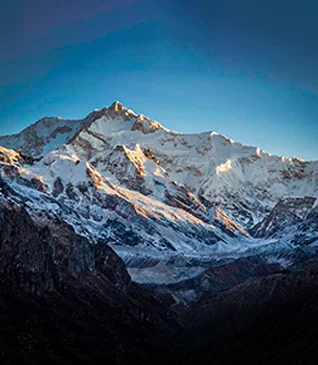Today, I want to write about an exciting adventure we had recently! We are excited to share our experience of the Kedarkantha Trek with the students from The Doon School. It was an exhilarating journey filled with adventure, nature, and learning.

The Kedarkantha Trek is one of the most sought-after winter treks in India. The trek offers breathtaking views of snow-covered mountains, serene landscapes, and charming villages. The students from The Doon School embarked on this trek with great enthusiasm and energy.
This was not just an adventure activity but also quite a learning experience for the children and we are glad to have been a part of this incredible experience.
Let Us Take A Look At How The Journey Unraveled
The trek started from the small village of Sankri, which is the base camp for Kedarkantha Trek. The first day of the trek involved a steep climb through dense forests of pine and oak trees. The students were amazed by the beauty of the forests and enjoyed the fresh air and serenity of the surroundings.
Next, the students trekked to the Kedarkantha base camp, which is located at an altitude of 10,000 feet. The base camp is surrounded by snow-covered peaks and offers a stunning view of the valley below. The students spent the night at the base camp, enjoying the bonfire and the starry night sky.

The summit day was most challenging as the students had to climb to the summit of Kedarkantha peak, which is located at an altitude of 12,500 feet. The climb was steep and required a lot of stamina and determination. However, the students persevered and reached the summit, where they were rewarded with a panoramic view of the Himalayan range.
The descent from the peak was equally thrilling as the students climbed down the snow-covered slopes on their way back to the base camp. The students were thrilled with the adventure and the experience.
The last day of the trek involved a descent back to Sankri, where the students bid goodbye to the beautiful mountains and forests. The trek was a perfect blend of adventure, nature, and learning. The students learned about the importance of preserving nature and the need to conserve our environment.
How Trekking In The Himalayas Can Be A Learning Experience For The Kids

Trekking is a great way for students to learn important life skills and virtues that can help them in their personal and professional lives.
Perseverance: Trekking often involves challenging terrain, steep climbs, and adverse weather conditions. By pushing themselves to keep going despite these challenges, students can develop perseverance and a strong work ethic.
Self-reliance: Trekking often involves being self-sufficient and relying on oneself to navigate unfamiliar terrain, set up camp, and prepare meals. This can help students develop self-reliance and the ability to take responsibility for their own well-being.
Goal-setting: Trekking involves setting goals, whether it's reaching a summit, completing a certain distance, or making it to a specific campsite. By learning how to set goals, develop a plan, and work towards achieving them, students can develop goal-setting skills that can be applied in any area of their lives.
Resilience: Trekking can be physically and mentally demanding, and students may face unexpected obstacles or setbacks along the way. By learning how to adapt to changing circumstances and overcome obstacles, students can develop resilience and the ability to bounce back from setbacks.
Teamwork: Trekking often involves traveling with a group, and students must learn how to work effectively as part of a team. By learning how to communicate, cooperate, and support one another, students can develop teamwork skills that can be valuable in any context.
Respect for nature: Trekking provides students with an opportunity to experience the natural world firsthand and develop a deeper appreciation for the environment. By learning how to minimize their impact on the environment and respect the natural world, students can develop a sense of environmental responsibility.
The Impact Of Outdoors On The Kids

Spending time outdoors can have a significant impact on students' physical and mental well-being, as well as their academic and personal development.
Physical Health: Outdoor activities can provide students with a range of physical health benefits, including improved cardiovascular health, increased physical fitness, and enhanced coordination and balance. Engaging in outdoor activities also encourages students to get more sunlight, which can help boost vitamin D levels and improve overall health.
Mental health: Spending time outdoors can be a great way to reduce stress, anxiety, and depression. Studies have shown that exposure to nature can have a calming effect on the mind and body, leading to reduced stress levels and improved overall mental health.
Academic performance: Spending time outdoors can also have a positive impact on academic performance. Research has shown that outdoor education programs can help improve students' problem-solving and critical thinking skills, as well as their ability to retain and recall information.
Environmental awareness: Engaging in outdoor activities can help students develop a greater appreciation for the natural world and a deeper understanding of environmental issues. This can lead to increased awareness of environmental conservation and sustainable living practices.
Social development: Outdoor activities can also provide opportunities for students to socialize and build relationships with peers, which can help improve their communication and teamwork skills. Outdoor activities also provide opportunities for students to develop leadership skills and learn how to work effectively as part of a team.
We at Trek The Himalayas are thrilled to have been a part of this journey with the students from The Doon School. We hope to continue to provide such adventurous experiences to students and adventure enthusiasts alike.
Thank you for choosing us for your adventure dreams!
Will see you soon with another adventure story from the Himalayas!!!
Keep trekking!!





.webp)










.webp)


